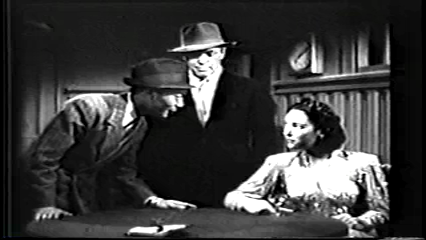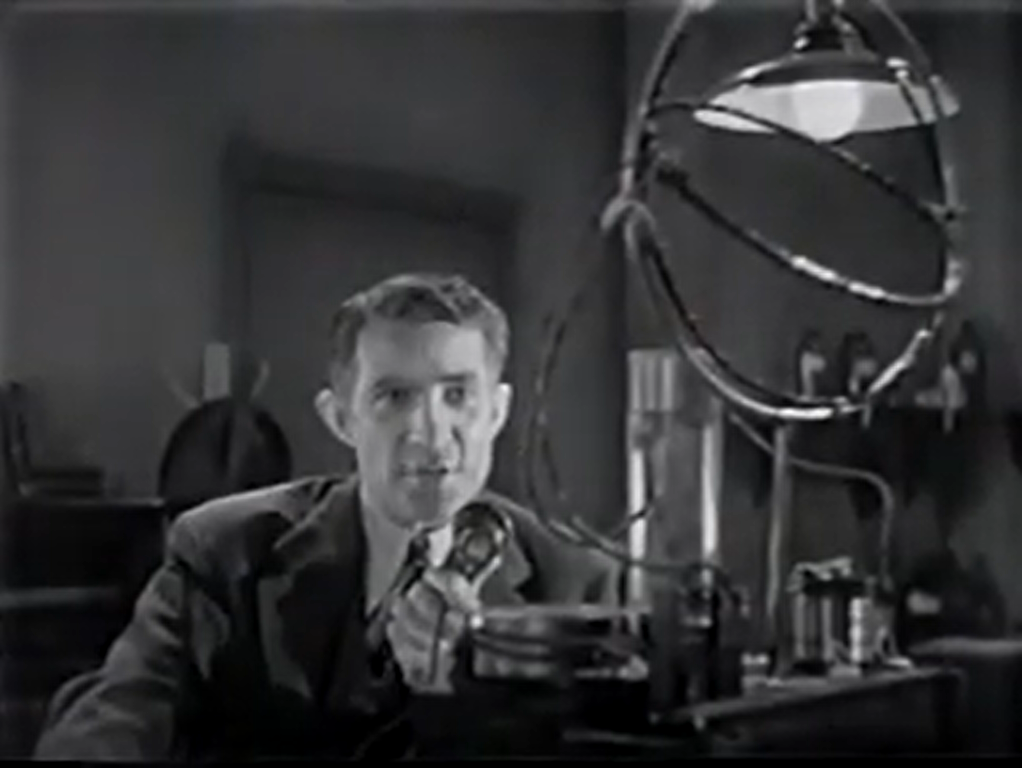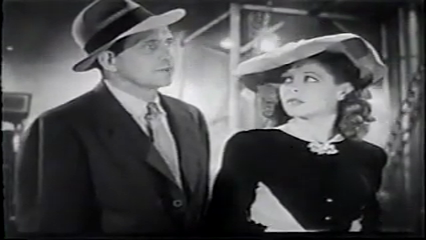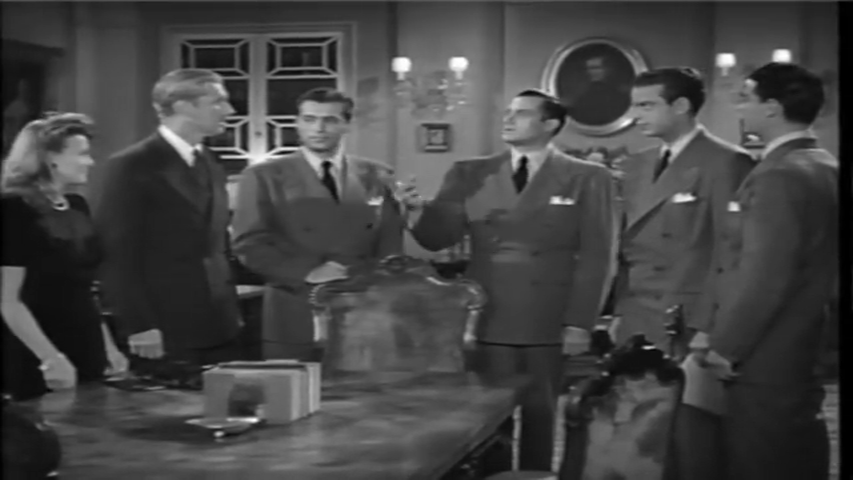-
#435 – Don Winslow of the Coast Guard (1943)
Don Winslow of the Coast Guard (1943)
Film review #435
Directors: Lewis D. Collins, Ray Taylor
SYNOPSIS: Following his success at Pearl Harbour, navy officer Don Winslow is assigned to the U.S. coast guard to stop Japanese saboteurs led by the mysterious “Scorpion.” Winslow’s new mission is to stop the saboteurs from disrupting the Coast Guard’s operations and to find their secret island base from where they are conducting their nefarious schemes.
THOUGHTS/ANALYSIS: Don Winslow of the Coast Guard is a 1943 Universal Pictures serial comprised of thirteen chapters. It is based on the comic strip Don Winslow of the Navy, approved by the U.S. Navy. The story of the serial opens with Commander Don Winslow, along with his buddy “Red,” being assigned to the U.S. Coast Guard to defend against foreign spies and saboteurs, in particular, a Japanese spy ring led by a man known only as “The Scorpion” (in ties of war the Coast Guard becomes under the direct command of the navy, which explains why Winslow is so easily transferred and keeps his rank and uniform etc.). Each chapter brings a new scheme for Winslow to foil as the spies try and sabotage facilities to prepare for a ground invasion. It’s all the sort of thing you would expect from a wartime serial such as this. Being a character that was approved by the U.S. navy, it should also be no surprise that this is a big propaganda film for the service, and as such the serial is full of ships and submarines engaged in warfare through the use of stock footage. Furthermore, the anti-Japanese rhetoric is pretty severe, again, probably to reinforce the idea of them as enemies of the U.S. at a time of war. Overall, the story isn’t anything special, as a lot of the wartime serials urge viewers to remain vigilant of spies to help their country.
The characters are all a pretty standard bunch. Don Winslow is obviously the heroic and ideal Navy officer who will defeat the enemy and claim victory for his country, as well as inspire people to support and join the navy as well. His friend “Red” serves as his sidekick to join in on the action scenes, and not much else. Mercedes Colby plays the typical token female role, and takes on a similar typical role as a nurse (although this is a little different than the job of journalist or secretary that female characters usually get in these serials). The villains are also nothing special, comprising of American actors in make-up to “look” Japanese, and The Scorpion himself having little presence. On the other hand, there are a fair amount of actual Asian actors to play some background Japanese soldiers, and actually speak some Japanese (even though the pronunciation is a little off from what I can tell).
The production values are fairly decent for the format, which perhaps reflects the use as wartime propaganda. I am left wondering just how much involvement the Navy had with the serial’s production, as there is a lot of stock footage of Navy battles and cannon fire, particularly in the first chapter, where this footage is used so overwhelmingly it is nearly impossible to follow the plot. Another curious thing to note is that there are practically no fistfights anywhere in the serial, which is basically unheard of in the format. Perhaps getting involved in such brawls would have looked unsightly for a Navy officer? Either way, that doesn’t stop Winslow shooting or pistol-whipping his enemies. Overall, Don Winslow of the Coast Guard follows many wartime serials, but is rather less than subtle about its use as military propaganda. The over reliance on stock footage makes the plot difficult to follow at times, although it makes a change to see action scenes that don’t revolve around poorly-choreographed fistfights. The inherently racist and nasty anti-Japanese rhetoric in particular means that the serial has not aged well, but you can see why it invests so much in it, given that the attack on Pearl Harbour would still have been raw in America’s consciousness, and the serial knows to play on that. I would not recommend this serial, as overall it is a bit too much of a story-related mess and a product of its time.
-
#418 – The Secret Code (1943)
The Secret Code (1943)
Film review #418
Film director: Spencer G. Bennet
SYNOPSIS: Dan Barton, a police officer, is assigned by his boss to infiltrate a Nazi spy ring operating in the country. To do this, Dan is framed for a murder and discharged from the police service, but before his Boss can tall anyone else what his mission is, he is murdered, which means that no one knows that he is undercover. Dan begins to try and gain the trust of the Nazi spies, while also donning the mask of the “Black Commando” to sabotage the saboteurs.
THOUGHTS/ANALYSIS: The Secret Code is a 1943 movie serial comprised of fifteen chapters. The serial opens up with Dan Barton, a police officer, being assigned to go undercover to infiltrate a Nazi spy ring operating somewhere in the city. He is framed for a murder and discharged from the police to give himself a cover story, while only his boss knows the true story. However, when Dan’s boss is killed himself, there is no one else who knows about the undercover operation, and so he must bring down the spy ring without any help from the police, who are looking to arrest him. He does get some help. however, from his friend in the police Pat Flanagan, and a reporter whose curiosity gets her involved. Dan joins the Nazi spies on various operations, but also secretly dons an all-black mask and suit, calling himself the “Black Commando,” and sabotaging their operations with the knowledge he has of them. This serial does change up some of the typical setups of the format; most notably where usually the masked villain is usually one of the heroes allies, here the masked hero is one of the villain’s seeming allies. The rest of the story setups are pretty standard though. The main objective for Barton is to obtain the “secret” code that the Nazis are using to send messages to their spies. The Nazis get their messages through a large light-up screen, where squares with numbers flash up on the screen and they are able to decrypt them for orders. The theme of codes runs through a lot of the story, showing how spies might receive their instructions through various coded ways, which I’ll discuss later on.
What makes the serial unique from all of the other war-time serials I’ve seen is that they actually refer to the villains as Nazis, while usually they are referred to as simply “a foreign power” (the same holds true for when the villains are Japanese but that’s more obvious when the actors are adorned in make-up to “look” Japanese). On the screen where their orders are given, a swastika or picture of Hitler himself is shown before the message begins, as the spies salute him and proclaim “Heil, Hitler” in authentic Nazi style. One of the little things I noticed in one of these scenes where they are filmed from behind, one of the actors clearly has his fingers crossed behind his back. Obviously all the actors are American and wouldn’t really salute the Nazi leader, and I wonder whether the actor knew he was being shot from the back or front; either way, these serials were pumped out in about a month, so there was never any time for re-shoots to edit out these hiccups. It should be of no surprise that this serial is a big chunk of war-time propaganda, attempting to educate the American public on the tactics of spies and the codes they use. The use of referencing the actual Nazis also puts things into focus with regards to who the enemy is.
The characters themselves are pretty bland. Barton is a typical main lead, his friend Pat Flanagan is the most stereotypical Irish friend character imaginable. His go to line is that everything that happens to him is the “luck o’ the Irish” is just a replacement for any kind of actual character, and he only seems to have an Irish accent when he needs to reference the fact that he is Irish. The female reporter is the typical sole female token character who is always either a reporter or a secretary, since apparently those are the only two jobs a woman in the 40′s could do, or could be seen to do on film anyway. The Nazi villains are also fairly bland, and the consistency of their accents fluctuates wildly. The masked identity of the Black Commando is not noteworthy, as it’s just a completely black suit and mask, without any unique characteristics or abilities. The acting across the characters is unremarkable, although there’s a few moments where actors clearly miss their cue and say their lines a little too late. All in all, nothing stands out in terms of the characters.
Perhaps the most unique and bizarre aspect of this serial is at the end of the each chapter. There, we are treated to a scene in the office of U.S. “army intelligence officer” Henry Burton, who speaks to the viewer directly about the different types of code enemy spies use, and what the public might be on the look out for. First of all, he is clearly not an actual member of the U.S. army, but another actor. Even if you don’t know this from looking up the credits, you can tell he fumbles his lines often when he actually has to decrypt the code on the blackboard, even though he probably has the answers offscreen, he hesitates when he has to do some actual decoding, and sometimes even says the wrong thing while writing the right answer on the board. The segment shows a number of interesting ways of making and breaking codes, but some of them are a little far-fetched, such as the one about the contents of a spy’s pockets forming a code, but there was no way you could have deduced the order the items should have been in order to decrypt it. It’s a nice bit of trivia, but it’s application to reality (like most propaganda) is dubious.
Overall, The Secret Code offers a few different takes on serial tropes, but is let down by lacklustre characters. The context of a war-time serial means it is bloated with propaganda and messaging, but is able to be much more direct with it than other serials at least. It’s unique enough that it might be worth a watch for serial enthusiasts, but it’s definitely a product of its time.
-
#393 – The Masked Marvel (1943)
The Masked Marvel (1943)
Film review #393
Director: Spencer Gordon Bennet
SYNOPSIS: Warren Hamilton and Martin Crane hire The Masked Marvel to stop Mura Sakima, the head of a criminal organisation who is sabotaging projects for the war effort. When Hamilton is murdered by one of Sakima’s henchman, The Masked Marvel hires a group of investigators to help stop Sakima before he can destroy any more of America’s military technology…
THOUGHTS/ANALYSIS: The Masked Marvel is a 1943 movie serial. The serial starts off with explosions. Lots of explosions. As various installations are blown up, the insurance company that insures them is having to pay up. Suspecting the Japanese spy Mura Sakima behind these attacks,, the chief executives Warren Hamilton and Martin Crane hire The Masked Marvel to find and stop Sakima. When Hamilton is murdered by one of Sakima’s henchman, The Masked Marvel hires four investigators to help with stopping Sakima, and along with Hamilton’s daughter Alice, they try to hunt Sakima down. The story is fairly standard, but executed quite well: there is a variety of action sequences with some well executed stunts. The serial takes place during World War II, and so the danger of the story having an impact on the war adds to the drama. Sakima as a Japanese spy also reflects this, as the Japanese were seen to be the U.S.’s main enemy. Unfortunately, this being 1943 means that Sakima is played by a white actor who is made to “look” Japanese with all the typical stereotypes you would expect (This is not without precedent, The Batman serial the same year also does this). This really does make the serial feel very dated.
One of the more novel twists on the format is that instead of the main villain being one of the ‘good guys’ in disguise with their identity concealed until the end, this time The Masked Marvel’s identity is the one that is hidden, the only clue being he is one of the four investigators that the Masked Marvel himself hired. This is a refreshing change on one of the staples of the format, although not entirely without precedent (the same idea was used in The Lone Ranger serial a few years earlier). The identity of the Masked marvel doesn’t really have much of an impact on the plot, but it’s a bit of extra fun trying to guess who he is. You may think that it would be easy to determine who the Marvel is, as he only wears half a face mask, but each of the four investigators wear the exact same suit, and the masked marvel puts on a different voice so there really is no way to determine who he is (his voice is dubbed over by a different person altogether). The body type also doesn’t help because whenever the Masked Marvel is on screen, he is played by stuntman Tom Steele. As the serial progresses, two of the investigators die so it slowly narrows down the suspects, which is again unusual for a serial to have such developments that impact on the story as a whole. Martin Crane takes a more typical role of being part of the protagonist’s team who is secretly working for Sakima without being discovered until the very end. Overall it’s a mixed bag of the usual tropes with a few twists to set itself apart.
One of the strongest points of the film is the stunts. As mentioned, the professional stuntman Tom Steele plays The Masked Marvel and gets into some pretty energetic fight scenes as he flies across sets and tackles various henchmen. It’s a shame his name doesn’t appear anywhere on the credits, as he does a great job. The cinematography also offers some interesting angles that add some dramatic flair to some scenes. There’s some bad as well, especially with the dummies that are used whenever someone ‘falls’ off a building or a cliff. In one of the cliffhangers, one of them falls from a building and you can clearly see its arm rip off as it hits the building on the way down, which is pretty funny. Given the quick turn-around for these serials (around three weeks from the start of filming to completion), any mistakes made were generally not re-shot because of the tight schedule. Overall, The Masked Marvel is a good serial that mixes things up slightly in terms of story, and also delivers high energy action. However, some dodgy effects and racial stereotyping hold the serial back and make it quite dated.






























